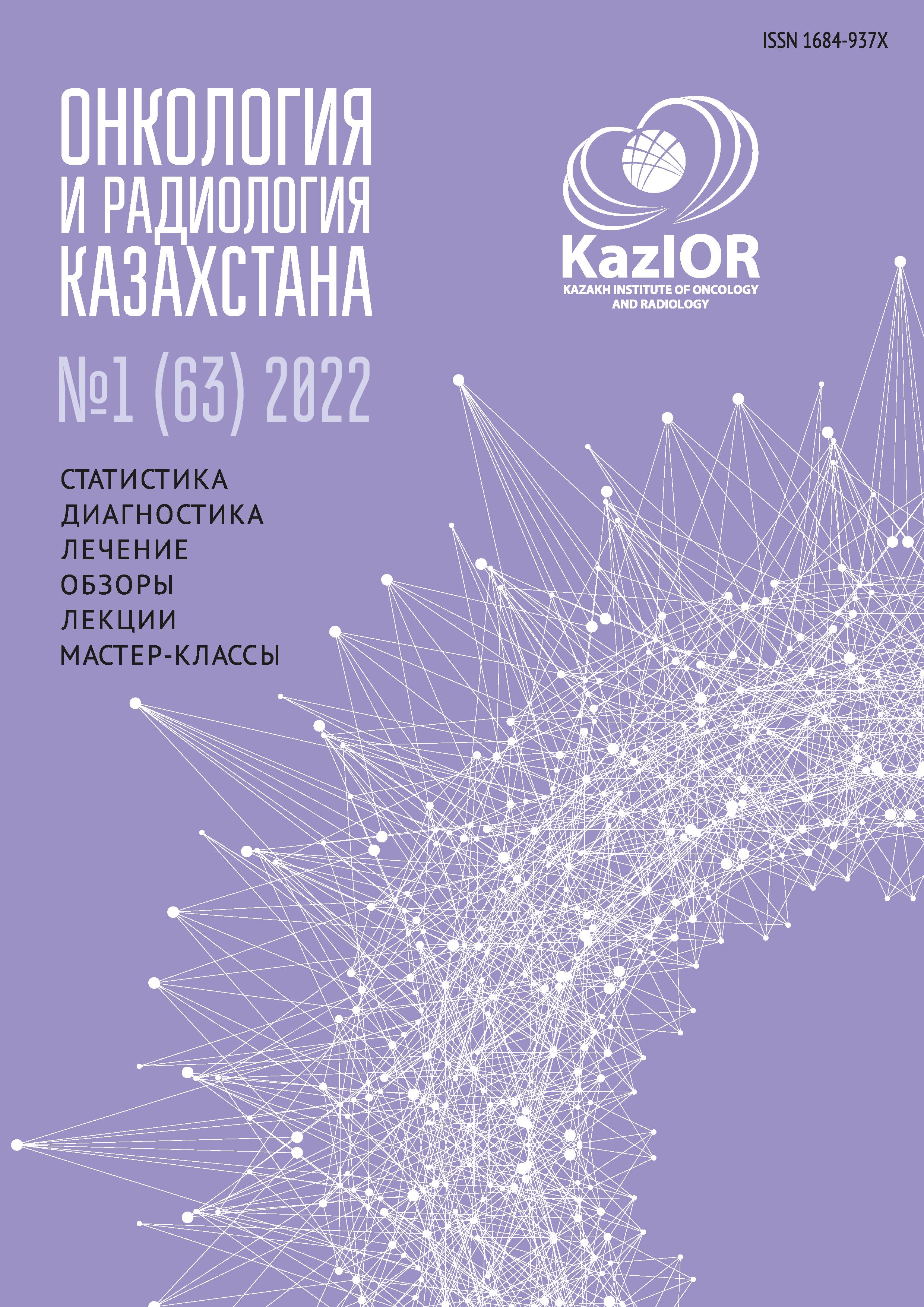Аналық бездің эпителий обырының метастаздарын анықтау үшін висцералды май тіндерінің белсенділігінде 18F-FDG жинақталуының болжамды мәні
Кілт сөздер:
18F-фтордезоксиглюкоза, Компьютерлік томографиямен біріктірілген позитронды-эмиссиялық томография, Болжамдық мәні, аналық бездің эпителий обырыАңдатпа
Өзектілігі: Аналық бездің эпителий обыры (EOC) – бұл ең қауіпті гинекологиялық қатерлі ісік, ал рецидив дамыған жағдайлардың шамамен 70%-ында нашар болжаммен жүреді.
Зерттеудің мақсаты: 18F-фтордезоксиглюкозаның (18F-FDG) компьютерлік томографиямен біріктірілген позитронды-эмиссиялық томография (ПЭТ/КТ) әдісімен бағаланған висцералды май тінінің (VAT) функционалды белсенділігін аналық бездің эпителий обыры (EOC) метастазының болжаушысы ретінде бағалау.
Әдістері: Біз хирургиялық емдеуден және химиотерапия курстарынан кейін 18F-FDG ПЭТ/КТ-мен гистологиялық расталған EOC бар 53 пациентті тексердік. Науқастардың жасы, гистологиялық түрі, обыр сатысы мен дәрежесі талданды. Функционалды VAT 18F-FDG ПЭТ/КТ көмегімен максималды стандартталған жинақталу мәнімен (SUVmax) өлшенді және түзетілген регрессиялық моделдерде іш қуысының сегіз жерінде және кіші жамбастағы кеш метастаздардың болжаушысы ретінде сыналды. Сондай-ақ, SUVmax үшін қисықтың (AUC) астындағы ең жақсы аймақтар туралы тиісті сезімталдықпен (Se) және ерекшелікпен (Sp) хабарлаймыз.
Нәтижелері: Регрессиялық моделдерге түзету енгізу мен ROC талдау кезінде де RE-де 18F-FDG жинақталуы (SUVmax 1,18; Se 64%; Sp 64%; AUC 0,669; p = 0,035) EOC бар науқастарда жасына, жынысына, бастапқы обырдың орналасуына, обыр дәрежесіне және гистологияға қарағанда кейінгі метастаздарды болжай алады.
Қорытынды: SUVmaxVAT негізінен EOC бар науқастарда кейінгі метастазбен байланысты және оларды болжаушы ретінде пайдалануға болады.

